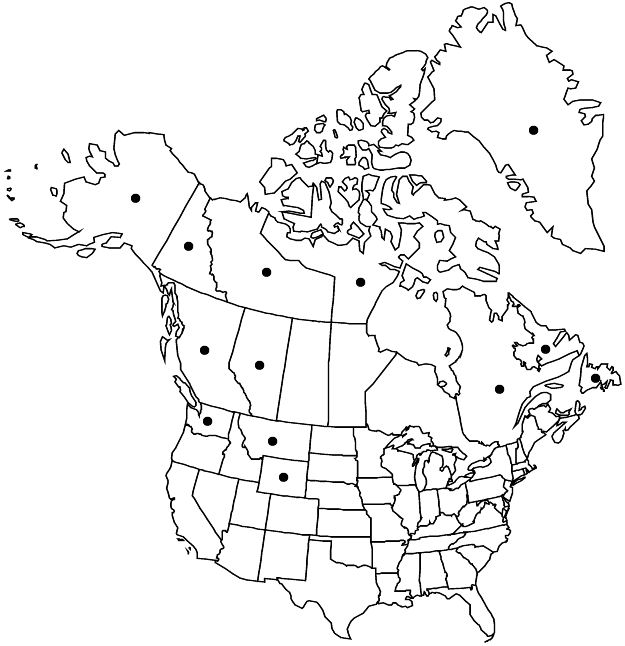Potentilla hyparctica subsp. elatior
J. Bot. Res. Inst. Texas 1: 813. 2007.
Plants: hairs usually sparse, sometimes common to abundant. Stems 0.4–2 (–2.5) dm. Central leaflets broadly obovate, petiolule (0–) 2–3 (–5) mm, base broadly cuneate to rounded, teeth broadly oblong, tooth apex obtuse to rounded. Inflorescences 1–3 (–5) -flowered. Flowers: epicalyx bractlets broadly oblong or ovate, 2–5 mm wide; sepals: apex obtuse to rounded. 2n = 42.
Phenology: Flowering late spring–summer.
Habitat: Damp ericaceous heath, snow patch meadows, damp arctic and alpine tundra, rocky outcrops, solifluction slopes, talus, mainly acidic bedrock
Elevation: 0–4000 m
Distribution

Greenland, Alta., B.C., Nfld. and Labr. (Labr.), N.W.T., Nunavut, Que., Yukon, Alaska, Mont., Wash., Wyo., Asia (Russian Far East)
Discussion
Geographically isolated and morphologically deviant plants from alpine sites in Montana (Beartooth Mountains), Washington (Mount Baker), and Wyoming (Sublette County) are provisionally assigned to subsp. elatior but likely represent a segregate race. These plants are exceptionally compact and hairy, with leaflets usually lacking petiolules.
Potentilla emarginata Pursh (1813), sometimes used for this taxon, is an illegitimate later homonym of P. emarginata Desfontaines (1804).
Selected References
None.
Lower Taxa
"thin" is not a number."dm" is not declared as a valid unit of measurement for this property."-3(-4)timesbasalleaves" is not declared as a valid unit of measurement for this property."dm" is not declared as a valid unit of measurement for this property."dm" is not declared as a valid unit of measurement for this property.